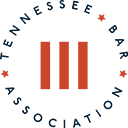
- FOR THE PUBLIC
-
 MEMBER CENTER
MEMBER CENTER
-
member
center -
Welcome
The Member Center is your gateway to the wealth of benefits and services that come with the TBA Complete Membership. Log in to make sure you have full access to all of the services and benefits available to members. Not a member yet, join now! And if you have any questions, feel free to contact TBA Membership Director Mindy Thomas.
-
Quick Links
-
-
- About

-
Founded in 1881
The Tennessee Bar Association is dedicated to enhancing fellowship among members of the state's legal community. A voluntary professional association, the TBA offers its members a variety of programs and services designed to assist in professional development and works to build a positive image for the profession in the community.
- CLE

-
TBA CLE
As the leader in quality Tennessee continuing legal education, the Tennessee Bar Association acts to enhance and further the practice of law through the professional development of lawyers across the state.
- Groups

-
TBA GROUPS
The TBA offers the opportunity for active involvement via sections, committees, divisions and governing groups. These groups serve a range of purposes, from providing in depth involvement in a particular practice area, to educational and social activities to leadership opportunities for legal professionals at every stage of their career.
- Programs
& Advocacy
-
TBA PROGRAMS & ADVOCACY
The Tennessee Bar Association is committed to serving Tennessee lawyers, our justice system and the community at large. These programs — provided by the TBA and partner organizations — have been developed to help meet that commitment.
- Communications

-
TBA Communications
The Tennessee Bar Association is the primary source of legal news and information for the Tennessee legal community. Here are the major channels of communications provided to serve member and nonmember attorneys.
- Calendar

-
TBA CALENDAR
The TBA hosts local and statewide events throughout the year.
-
-
FOR THE PUBLIC
 MEMBER CENTER
MEMBER CENTER
-
member
center -
Welcome
The Member Center is your gateway to the wealth of benefits and services that come with the TBA Complete Membership. Log in to make sure you have full access to all of the services and benefits available to members. Not a member yet, join now! And if you have any questions, feel free to contact TBA Membership Director Mindy Thomas.
-
Quick Links
-